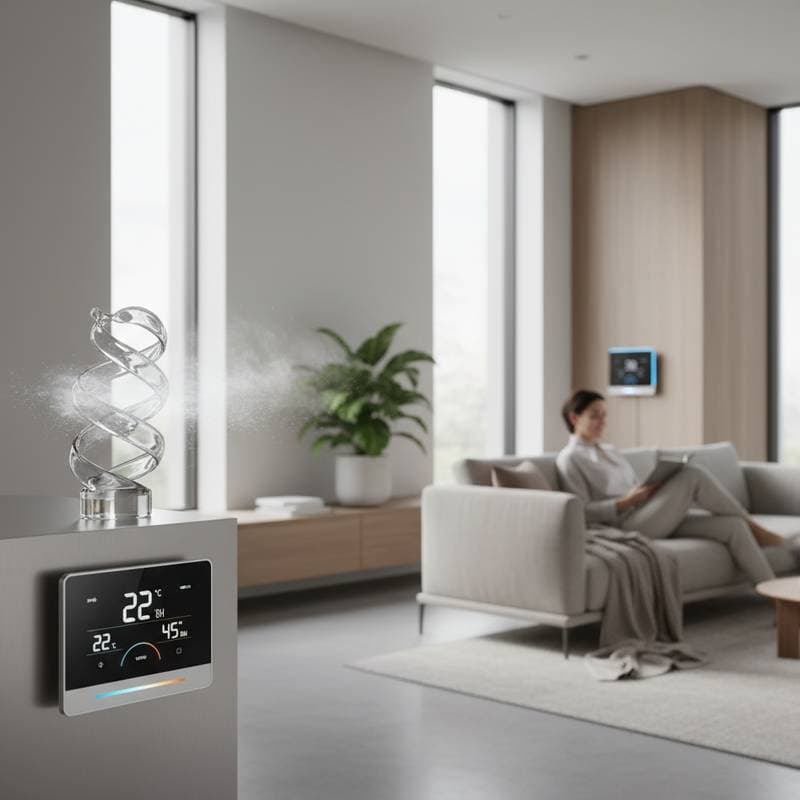Why 40-50% Humidity Is Your Home's Comfort Sweet Spot
Maintaining the right humidity level in your home transforms everyday living. Many people focus solely on temperature settings, yet humidity plays an equally vital role in overall comfort. The ideal range of 40 to 50 percent strikes a balance that prevents common issues associated with extremes.
Understanding Ideal Indoor Humidity
Humidity refers to the amount of water vapor present in the air. When levels fall below 40 percent, the air becomes too dry, leading to discomfort such as dry skin, irritated eyes, and respiratory challenges. Conversely, levels above 50 percent create a muggy environment that fosters mold growth, dust mites, and allergens.
Health organizations recommend 40 to 50 percent as the optimal zone for indoor spaces. This range supports human physiology by keeping mucous membranes moist without promoting microbial proliferation. Homeowners who monitor and adjust humidity report fewer allergies and improved sleep quality.
The Impact of Seasonal Variations
Summer months often bring high outdoor humidity, which seeps indoors and makes spaces feel warmer than the thermostat indicates. Without proper control, this leads to sticky discomfort and increased reliance on air conditioning. In winter, heating systems dry out the air, causing static electricity, cracked lips, and wooden furniture to warp.
Achieving balance year-round requires attention to local climate patterns. For instance, in humid regions, dehumidifiers extract excess moisture during peak seasons. In arid areas, humidifiers add necessary vapor to counteract dry heat from furnaces.
Benefits of Balanced Humidity for Health and Home
Proper humidity enhances respiratory health by reducing the spread of viruses, which thrive in dry conditions. It also protects structural elements like hardwood floors and walls from expansion or contraction damage. Energy savings follow naturally, as balanced air allows HVAC systems to operate more efficiently.
Families notice tangible improvements, from fewer colds to better preservation of artwork and electronics. Air quality rises as balanced levels minimize pollutant circulation. Overall, this sweet spot fosters a sanctuary that supports well-being and longevity of the home.
How to Measure and Monitor Humidity
Invest in a reliable hygrometer to track levels accurately. Place devices in key areas like living rooms and bedrooms for comprehensive readings. Digital models often integrate with smart home apps, providing real-time alerts and historical data.
Check readings weekly, especially during weather shifts. Aim to stay within the 40 to 50 percent target. If deviations occur, note potential causes such as poor ventilation or recent showers.
Practical Steps to Achieve Optimal Humidity
-
Seal and Insulate: Ensure windows and doors prevent moisture ingress. Proper insulation maintains stable indoor conditions.
-
Use Whole-Home Solutions: Install dehumidifiers or humidifiers connected to your central HVAC system. These units automatically adjust based on sensor input.
-
Incorporate Ventilation: Exhaust fans in bathrooms and kitchens remove humid air promptly. Open windows on mild days to circulate fresh air.
-
Maintain Houseplants: Certain plants naturally regulate humidity through transpiration. Select low-maintenance varieties suited to your space.
-
Professional Assessment: Schedule an HVAC inspection to evaluate system performance. Experts can recommend upgrades like variable-speed units for precise control.
Integrating Smart Technology
Modern systems feature app-controlled settings for remote monitoring. Users adjust humidity from their phones, ensuring consistency even when away. Integration with thermostats optimizes both temperature and moisture for peak efficiency.
These advancements make maintenance effortless. Data logs help identify patterns, allowing proactive adjustments. Homeowners embrace this technology for its convenience and long-term savings.
Long-Term Strategies for Sustained Comfort
Regular filter changes in HVAC units prevent clogs that affect humidity regulation. Clean coils annually to sustain performance. Consider zoning systems to customize levels in different rooms.
Educate household members on simple habits, like using lids on pots while cooking. These collective efforts compound to maintain the ideal range effortlessly.
Realizing the Full Potential of Your Home
Embracing 40 to 50 percent humidity unlocks a more enjoyable living environment. Healthier air, reduced maintenance, and lower energy costs become standard. Take the first step by assessing your current setup and implementing targeted improvements for lasting benefits.



